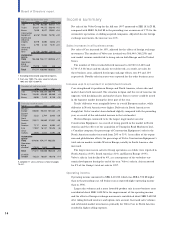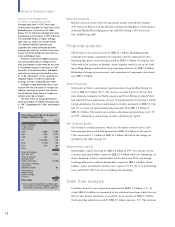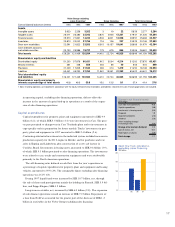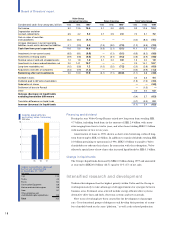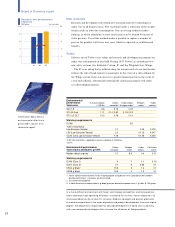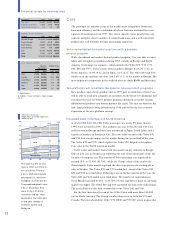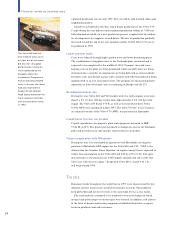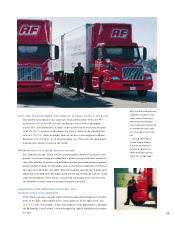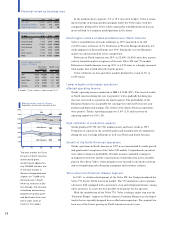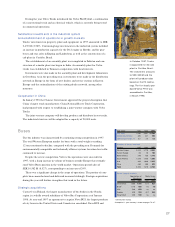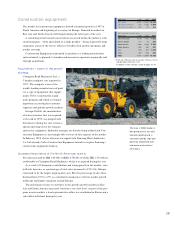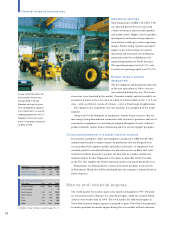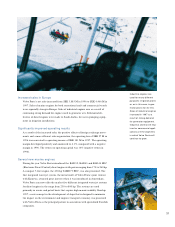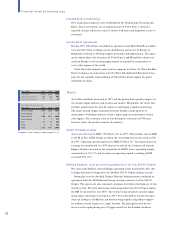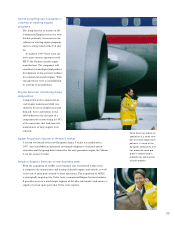Volvo 1997 Annual Report Download - page 25
Download and view the complete annual report
Please find page 25 of the 1997 Volvo annual report below. You can navigate through the pages in the report by either clicking on the pages listed below, or by using the keyword search tool below to find specific information within the annual report.
23
were introduced during the year were immediate sales successes. The percentage
of estate wagons sold, relative to Volvo’s total passenger car sales, thereby in-
creased strikingly in both the U.S. and Canada. Volvo will begin selling the Volvo
S40 and V40 on the North American market during 1999.
In Japan, where the consumption tax was increased on April 1, 1997, the
number of Volvo cars registered declined by 17%, to 19,900 (24,000). Some
recovery in sales was noted at the end of the year.
Strong im provem ent in earnings
Operating income improved substantially, to SEK 4,510 M (1,498). The increase
was attributable to larger volumes, higher margins and a better product mix as a
result of the introduction of the new model versions. Operating income was also
affected favorably by the positive impact of foreign exchange movements, but this
was offset to a degree mainly by higher selling expenses. The operating margin
increased to 4.7% (1.8) and the return on operating capital exceeded 25% (12).
Changeover for new passenger car models in the Torslanda plant
and increased capacity in Born
Volvo produced 387,400 (375,800) passenger cars during the year. Utilization of
capacity was high in both Torslanda (Sweden) and Ghent (Belgium). The change-
over to handle production of Volvo’s future large sedan in the Torslanda plant
was begun parallel with the phasing out of the Volvo 940, S90 and V90. A strong
trend of sales for the Volvo 940 resulted in maximum utilization of capacity up
until February 1998, when production of the model ceased.
Production of the Volvo S40 and V40 in the NedCar plant in Born, Holland
was increased to 115,000 cars during the year. To take care of continuing strong
order booking, capacity will be further expanded to 140,000 cars in 1998. During
1998, the Volvo S40 and V40 will also begin to be assembled in Volvo´s plants in
Thailand and Malaysia based on assembly bits delivered from Born. Volvo has de-
cided to begin assembly of the Volvo S40 and V40 in Gaborone, Botswana, with
Production of the Volvo
C70 Coupé started during
the year at AutoNova in
Uddevalla. The first cars
were delivered in the U.S.,
Japan and Europe.
No cars are built for the
European market unless a
custom er order has been
received, thereby reducing
inventory costs. This sys-
tem is also being applied
to a lim ited degree in the
Japanese m arket.



